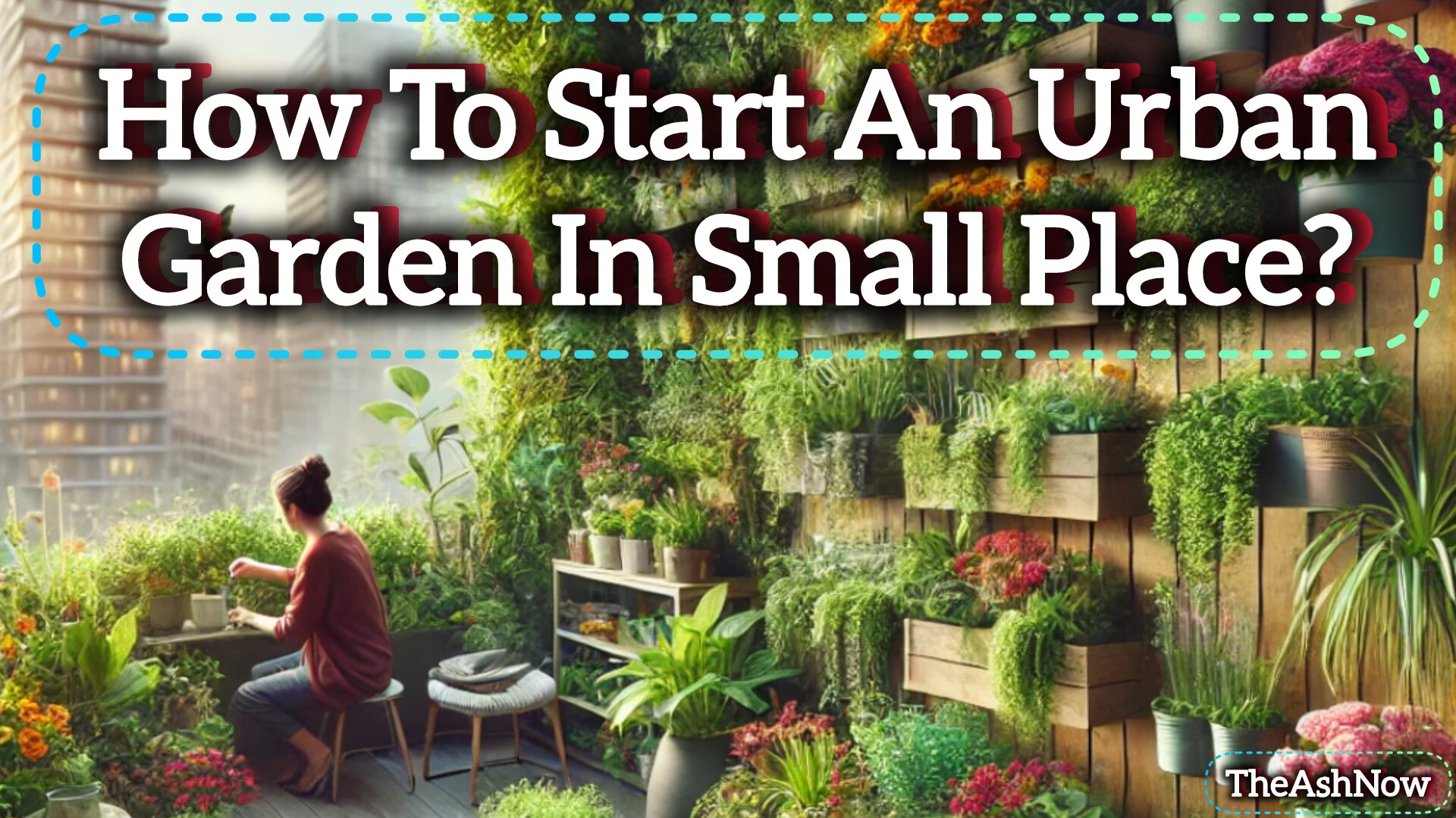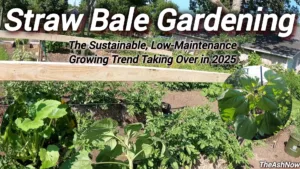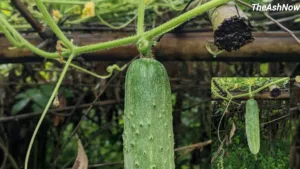How to Start an Urban Garden in a Small Place: Urban Gardening is a great way to bring green to your home, even with a limited place. Whether you live in a small apartment, a building with high growth, or in a house with a small garden, you can still grow fresh herbs, vegetables, and flowers. This guide will run through the steps required to start your urban garden effectively.
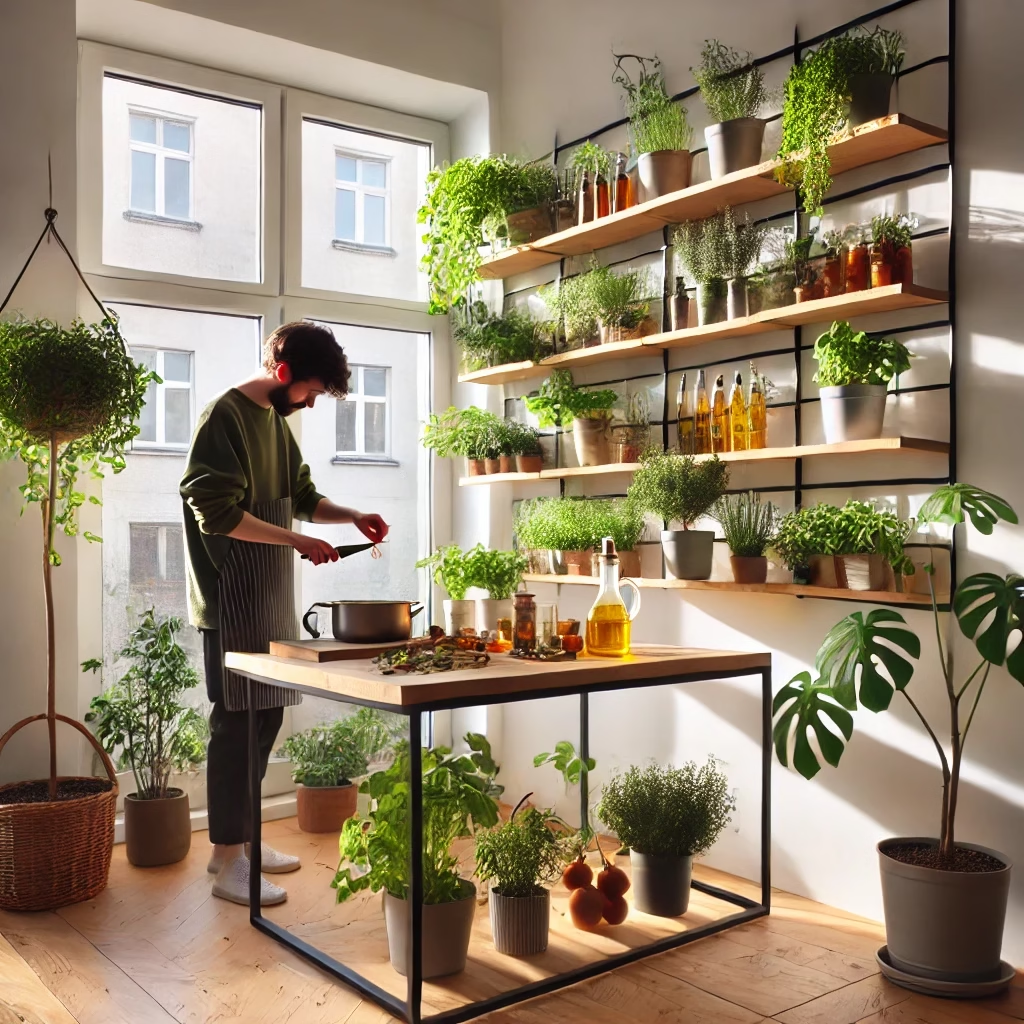
Image- ChatGPT
Benefits of Urban Gardening
Before we dive into the how-to, let’s look at some of the key benefits of urban gardening:
- Access to fresh yield – increasing the herbs and vegetables ensures a fresh and biological food source.
- Environmental effects – Plants help to improve air quality, reduce urban heat, and support biodiversity.
- Mental welfare – Garden is known to reduce stress and improve mental health.
- Room adaptation – the use of vertical and container gardening techniques maximizes limited space.
- Cost Savings – Growing your food reduces grocery bills over time.
Step-by-Step Guide to Starting an Urban Garden
1. Assess Your Space
Before you start, evaluate your available space. Consider options such as:
- Balconies and Terraces – Great for container gardening and vertical setups.
- Windowsills and Indoors – Ideal for herbs and small plants.
- Rooftops – Can accommodate raised beds and larger plant varieties.
- Community Gardens – If personal space is limited, consider joining a shared urban garden.
2. Choose the correct plant
It is important to choose the right plants for a successful city garden. Some plants thrive in limited places and require minimal maintenance. Ideal options include:
- Herbs – Tulsi, mint, quotehal, thyme and henna.
- Blade greens – latus, spinach and quay.
- Vegetables – tomatoes, chili, radish, and carrots.
- Small fruits – strawberries and dwarf trees.
- Flowers – succulents for marigolds, petunias, and beauty appeal.
3. Select Suitable Containers
Containers are the backbone of urban gardening. Choose from options like:
- Dishes and plants – are available in different sizes and materials.
- Hanging basket – perfect for plants and flowers.
- Vertical garden -mounted plants, trails, and stacked shelves.
- The hydroponic system-free alternative that maximizes space.
- Raised beds – if you have a roof or a small garden, the raised beds work well.
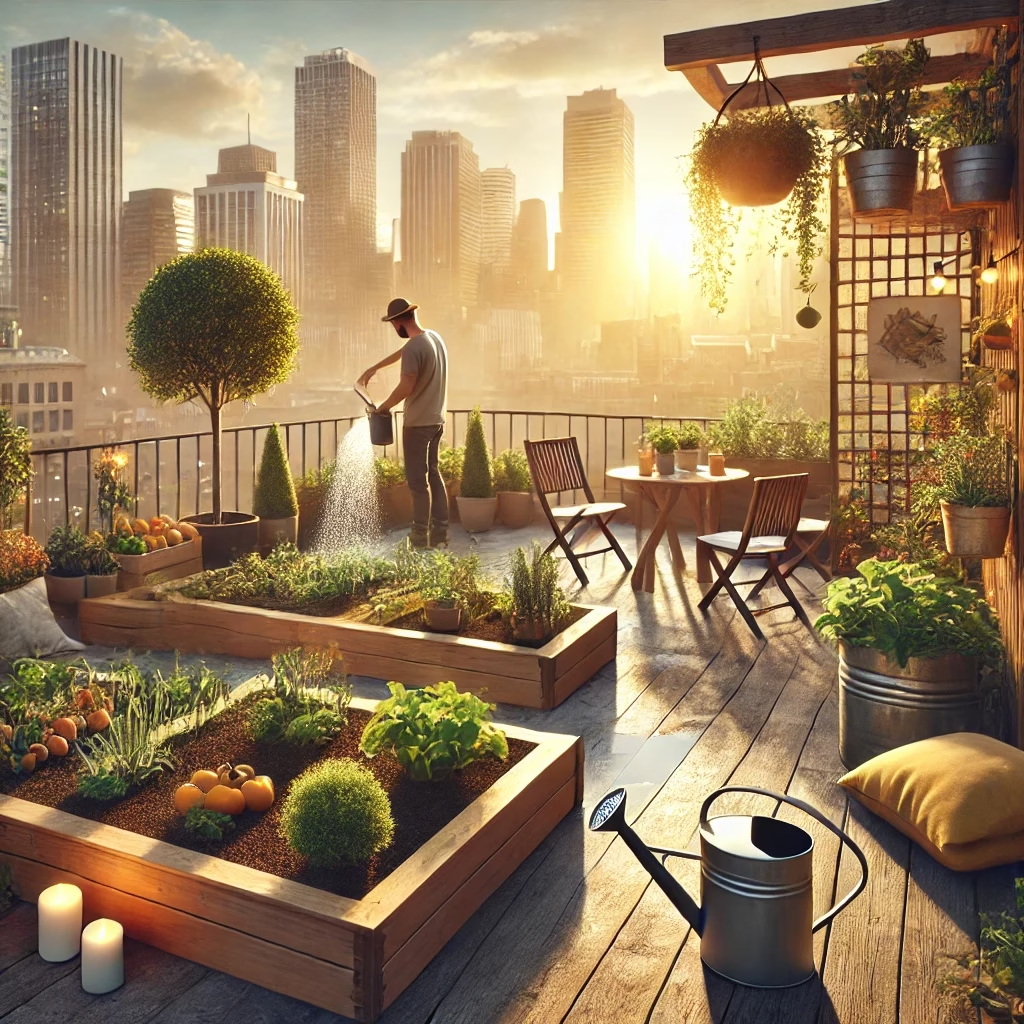
Image- ChatGPT
4. Ensure proper soil and drainage
Good soil is important for plant health. Use a high-quality potted mix that maintains moisture and allows proper drainage. Increase soil with livestock manure and organic fertilizer for better nutrition. Make sure all containers have drainage holes to prevent water logging.
5. Give enough sunlight
Most plants require at least 6-8 hours of sunlight daily. If natural light is limited, consider using LED growth lights to meet the needs of the plants. Arrange your plants strategically to maximize contact with the sun.
6. Implement a Watering Routine
Urban gardens need consistent watering. Follow these tips:
- Self-Watering Pots – Reduce manual watering frequency.
- Drip Irrigation – It’s Efficient for balconies and terraces.
- Misting for Indoor Plants – Prevents overwatering while maintaining humidity.
7. Use Vertical Gardening Techniques
Make the most of your space by going vertical. Use:
- Wall Planters – Great for herbs and flowers.
- Stacked Shelving – Organizes multiple plants compactly.
- Trellises and Hanging Pots – It’s Ideal for climbing plants like tomatoes and beans.

8. Practice Organic Pest Control
Keep your urban garden pest-free using organic methods:
- Neem Oil Spray – Repels common insects.
- Partner planting – Tulsi planting near tomatoes can stop pests.
- Use garlic or soap-based spray to close DIY natural spray bugs.
- Encourage beneficial insects – ladybugs and bees help control insects and pollution plants.
9. Harvest and Maintain Your Garden
Regularly check your plants for signs of growth and disease. Harvest vegetables and herbs on time to encourage continuous production. Prune plants when necessary and replace any that are underperforming.
10. Get Creative with Gardening Styles
Urban gardening allows for creativity. Experiment with:
- Terrarium Gardens – Miniature plant setups for limited indoor spaces.
- Kitchen Countertop Herb Gardens – Grow fresh herbs right in your kitchen.
- Bottle and Can Gardening – Upcycle old containers for sustainability.
Conclusion
Starting an urban garden in a small space is a price recording. With a careful plan, the right plant alternative, and efficient use of space, anyone can grow their mini-green oasis. Whether you aim to increase fresh dividends, beautify your home, or just enjoy a new hobby, urban gardening provides huge benefits.
Start today and make your little space a rich garden!

